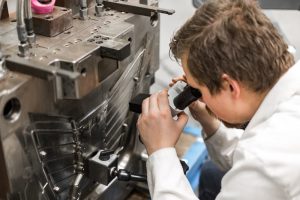 Precision engineering plays a pivotal role in today’s advanced manufacturing industries, where exacting tolerances are essential for the production of high-performance components. Ceramic Injection Molding (CIM) enables the fabrication of intricate and complex parts with unparalleled precision. By combining the benefits of traditional materials with the flexibility and efficiency of injection molding, custom injection molders have revolutionized the manufacturing landscape.
Precision engineering plays a pivotal role in today’s advanced manufacturing industries, where exacting tolerances are essential for the production of high-performance components. Ceramic Injection Molding (CIM) enables the fabrication of intricate and complex parts with unparalleled precision. By combining the benefits of traditional materials with the flexibility and efficiency of injection molding, custom injection molders have revolutionized the manufacturing landscape.
In this extensive overview, we’ll explore its principles, advantages, and applications and look into how this process opens new avenues for achieving tight tolerances and propels the development of cutting-edge technologies across diverse sectors.
What are the tolerances for ceramic injection molding and how to achieve them?
Tolerances in CIM refer to the allowable variation in dimensions and features of the molded parts, ensuring that they meet the specified design requirements and function optimally. Achieving tight tolerances is crucial for various applications, such as aerospace, electronics, medical devices, and automotive industries, where precision and reliability are paramount. Let’s explore the typical tolerances for CIM and the strategies employed to achieve them.
The tolerances
The tolerances are generally expressed in terms of linear dimensions, typically in micrometers (μm) or millimeters (mm), and angular dimensions in degrees. The actual tolerance requirements depend on the specific application and the complexity of the part being produced. In most cases, the tolerances for linear dimensions in CIM can range from ±0.025mm to ±0.127mm (±0.001″ to ±0.005″), while angular tolerances can range from ±0.5° to ±1.0°.
It is crucial to note that achieving tight tolerances in CIM can be more challenging compared to other manufacturing processes like plastic or metal injection molding. Ceramic materials tend to shrink significantly during sintering, which can lead to distortion and dimensional changes in the final part. As a result, careful consideration and control of various factors are necessary to meet the stringent requirements.
Strategies to achieve tight tolerances
- Material selection: Certain ceramic formulations exhibit lower shrinkage rates during sintering, making them more suitable for achieving tight tolerances. High-purity ceramics, such as alumina (aluminum oxide) and zirconia, are often preferred for their superior mechanical properties and lower shrinkage characteristics.
- Mold design and fabrication: The mold design must account for the anticipated shrinkage during sintering, and allowances should be made accordingly. Utilizing advanced computer-aided design (CAD) and computer-aided manufacturing (CAM) software can enhance the accuracy of mold design and fabrication, ensuring precise replication of complex geometries.
- Process control: Factors such as injection pressure, temperature, injection speed, and dwell time must be carefully monitored and controlled throughout the molding process. Advanced process monitoring systems can help maintain stability and reduce variability.
- Feedstock formulation: By optimizing the feedstock composition, particle size distribution, and binder content, manufacturers can enhance the flow behavior and shrinkage characteristics, leading to tighter tolerances.
- Debinding and sintering optimization: After molding, the parts undergo a debinding process to remove the binder material before sintering. Proper control of debinding parameters is essential to prevent distortion and ensure uniform shrinkage. Sintering conditions, including temperature and time, must also be carefully controlled to achieve the desired density and dimensions in the final part.
- Post-processing and finishing: In some cases, post-processing steps, such as precision machining or grinding, may be necessary to achieve the final desired tolerances.
- Quality assurance: Implementing robust quality assurance protocols, including inspection, metrology, and testing, is crucial to verifying that the manufactured parts meet the specified tolerances. Advanced metrology equipment, such as coordinate measuring machines (CMMs) and optical scanners, can ensure accurate and repeatable measurements.
 Who are the best custom injection molders?
Who are the best custom injection molders?
Wunder Mold is a dedicated team of experienced professionals ready to listen to your needs and requirements and work closely with you throughout the process, from selecting the right material for your part to the final phase of production. Send us an email at sales@wundermold.com or reach out to us by phone and let us know all about the part you need.
 Who are the best custom injection molders?
Who are the best custom injection molders?